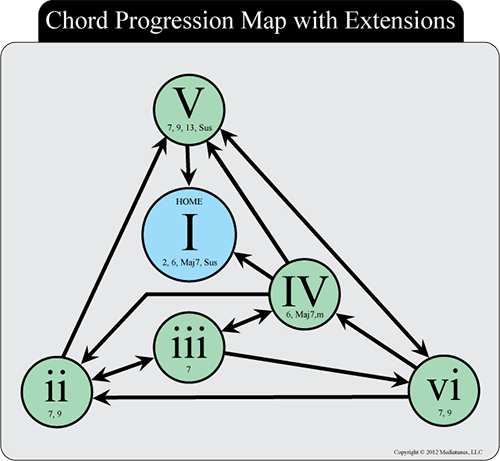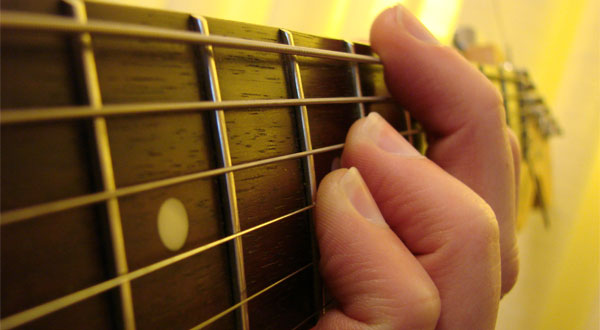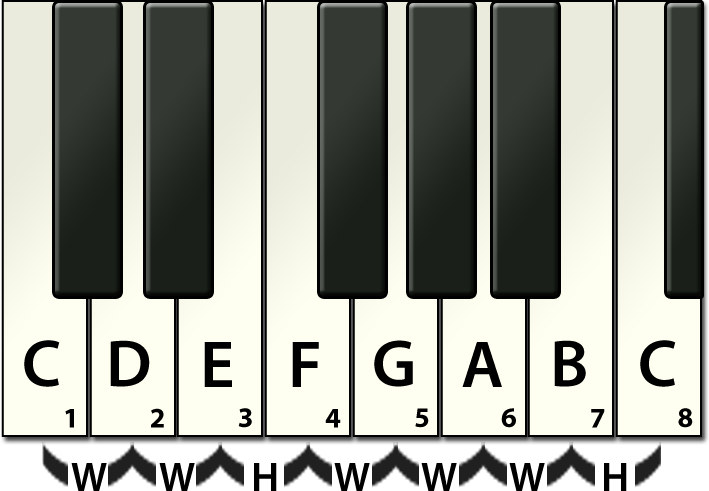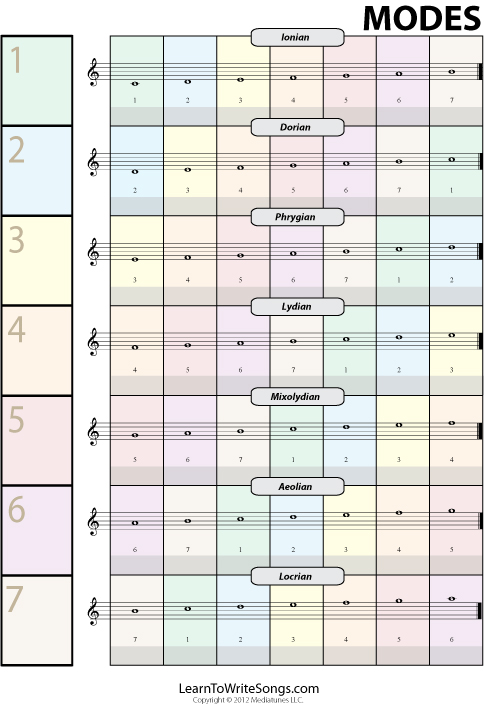Understanding Chord Symbols

Understanding chord symbols is important in songwriting. Here we will cover the topic of chord symbols and chord construction. While there are many books out there on the market, there is very little explanation of how chords symbols are interpreted. I’d like to share some of my insight with you. In most song sheets chords are given for guitar or keyboard players. Functional names are not used for this purpose. Instead, the root and quality of the chord are given in what may be termed lead-sheet notation (for example, Cmaj and F#min).
Chord symbols are made up of 3 component parts:
1. The ROOT
The alphabetical name of a chord.
i.e. C, D, E, F, G etc
2. The Chord Type
Indicating either Major, minor, dominant, augmented or diminished.
3. The extension:
Tones added to the basic three note chord (triad) that changes its sound but not its type. Extensions are represented by scale step numbers Here are some examples of extension numbers: 2, 6, 7, 9, 11 and 13. For numbers 9, 11 and 13 these chord will also include the Dominant 7 note
Here are the basic chord types:
Major
This is often indicated by
- GMaj
- GMa
- GM
- or just G
The chord formula for a major chord is 1 – 3 – 5. Where 1 is the the root note of the chord.
Minor
To create a minor made by flatting the 3rd tone of the chord by 1 step. Minor chords are Indicated by
- Gmin
- Gm
- Gm
- or G-
The formula for a minor chord is 1 – 3b – 5
Dominant 7
Indicated with only the root and extension numbers. Since some major chords and all dominant 7 chords can be written without chord type designations, the following will help you to distinguish between a major chord and a dominant chord: If the FIRST extension number following the root or letter name of the chord is 7 or greater, and it does not specifically state major or minor then it is a dominant chord.
The formula for the dominant 7chord is 1 – 3 – 5 – 7b
Augmented
The augmented chord is created by raising the 5th note of the scale one step sharp. Augmented chord are 3 note chords indicated by
- G aug,
- G+
- G#5
EXCEPTION: G+7 is always a dominant chord as is G7#5
The formula for an Augmented chord is 1 – 3 – 5#
Diminished
To create a diminished chord requires flatting the 5th note of the scale by one step. Diminished chords are Indicated by
- Gdim,
- Gdim7
- Gº,
- Gº7
The formula for the diminished chord is 1 – 3 – 5b
Suspended
The suspended note is the the 4th note of the scale. It is indicated
- C4
- Csus
- Csus7
- C11
The chord formula for a suspended chord is 1 -3 – 4 – 5
To learn more visit Chord Progressions for Songwriters
For a wall poster click on link below.








Leave a Reply